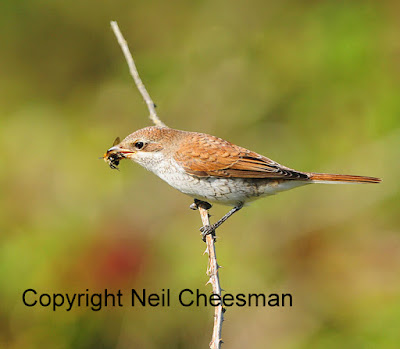Red-backed shrike Tidemills East Sussex September 2016
The male is unmistakable with a bluish-grey head, black mask, bright chestnut back and thick hooked black bill. Shrikes like to perch prominently on the tops of bushes, fence posts and telephone wires, where they have a good view of potential prey. Items caught are then taken to a larder where they are impaled on a thorn or wedged in a fork. Its dramatic decline to virtual extinction as a UK breeding species make this a Red List bird.
AND A WHEATEAR!










































